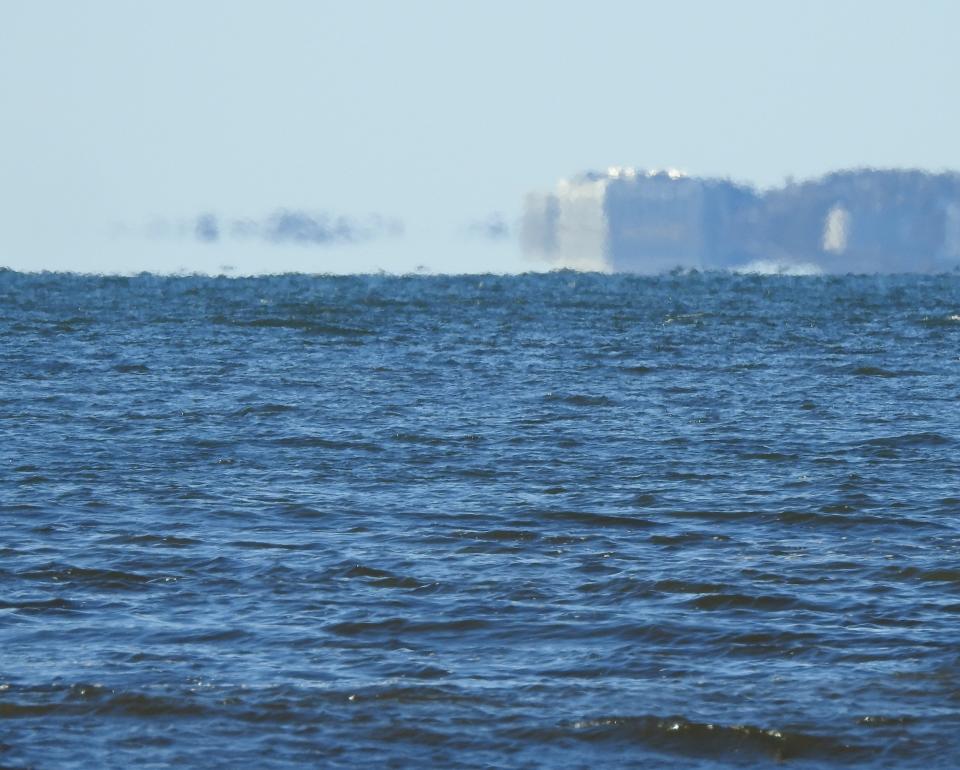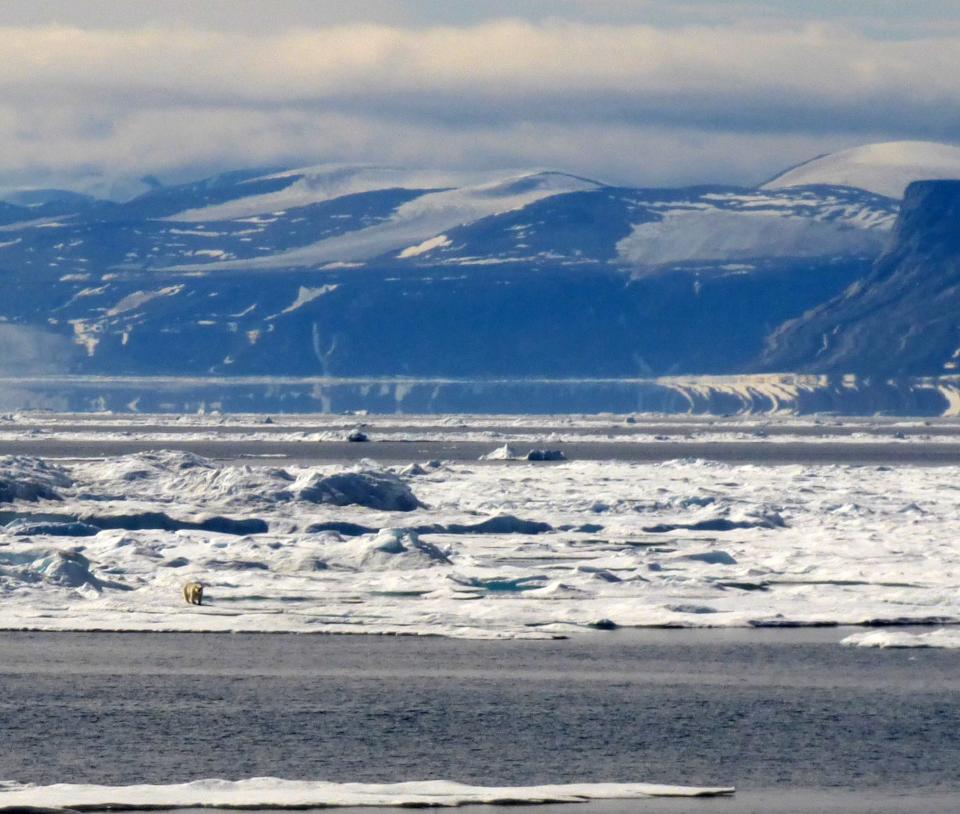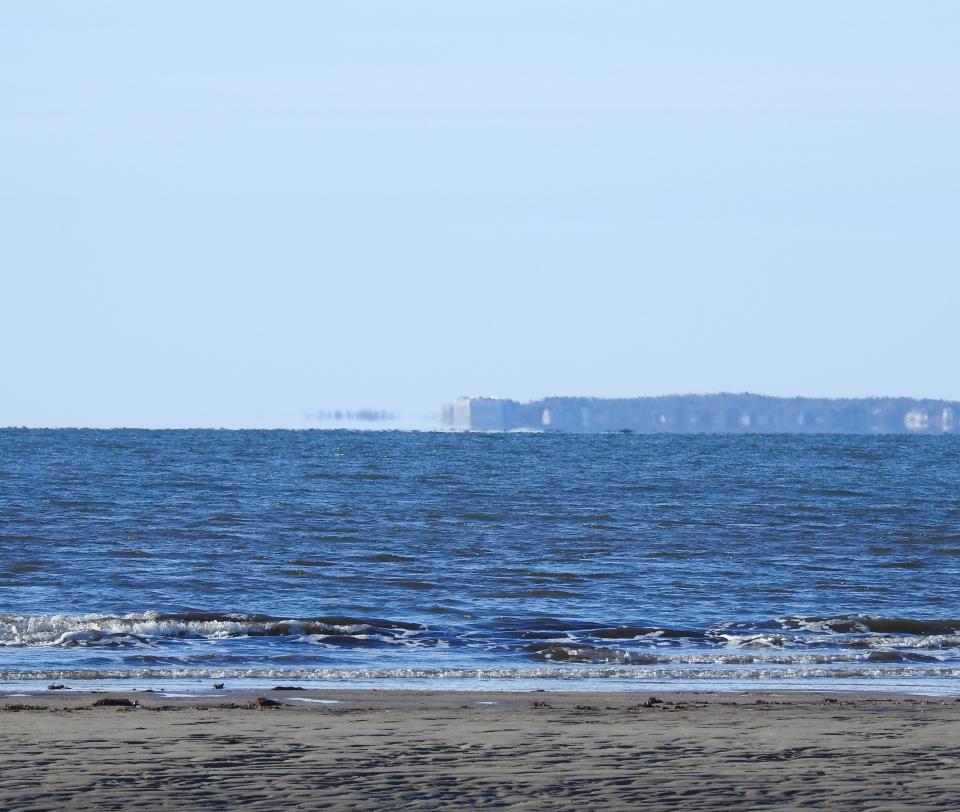Fata Morgana, a complex mirage, captured on Parsons Beach: Nature News
I was at Parsons Beach in Kennebunk last weekend on that bitingly cold morning. While that might have been our last hurrah of wintry weather, if we do get another blast of cold, I recommend going to the coast and looking for a most remarkable optical illusion.
We were looking across the water towards Mount Agamenticus. The coastline, in places, seemed to almost hang in the air with other parts elongated and wavering, built up, almost castle-like into high ramparts, gleaming white in the sun. This was a Fata Morgana, a complex type of mirage named for Morgan le Fay, the fairy witch of Arthurian Legend who conjured up islands and castles in the air to lure sailors to death.

You don’t necessarily need cold weather and an ocean to see a Fata Morgana, but it helps.
A Fata Morgana needs (at its simplest) a layer of warm air on top of a layer of cold air. This results in an increase in temperature as you go up, the opposite of what normally happens. Light bends (refracts) when it goes through the boundary between layers of air with different densities, causing the position of objects to appear to shift in relation to the viewer. This is much like what happens when you view a straw in a glass of water from the side. The part of the straw underwater looks like it is shifted relative to the straw above water. It's not magic, instead, this is due to the different refractive indexes (indexes of how much light is bent as it moves through different materials) of the air and the water.
According to astronomer Stephen James O’Meara (Astronomy May 2014) “In the Fata Morgana, light rays from distant objects travel across the interface between the cold and warm air layers in disparate curved paths to reach our eyes. Consequently, the light from these objects smears out vertically. The rays also can be magnified, multiplied (with alternating erect and inverted components), and distorted. Classically, the Fata Morgana has three or more false images, which can change shapes in a matter of seconds. The shapes an observer sees also vary with position relative to the cold/warm air boundary.”

Fata Morgana occurs with some regularity in the Strait of Messina in Southern Italy, and so this mirage got the Italian name. But they are also very common in polar regions, in particular over large sheets of ice that have a uniform low temperature.
I first encountered a Fata Morgana while reading about Arctic exploration. One of my favorite such books recounts Donald MacMillan’s 1913 expedition to find Crocker Land, north of Ellesmere Island in the Canadian Arctic. (“A Wretched and Precarious Situation: In Search of the Last Arctic Frontier” by David Welky.) What was supposed to be a two-year voyage of scientific discovery turned into a grueling five-year fight for survival. In the end, Crocker Land was deemed a mirage.
Nature News: Why lichens are more than just a splash of green on tree trunks
All of this is based upon a sighting (somewhat questionable in hindsight) of this new “land” by the famous Arctic explorer Robert Peary in 1906. Peary was looking across ice fields north of Greenland and claimed to see a series of peaks in the distance. When the MacMillan party reached those icefields, they, in turn, spent valuable time chasing the frozen apparition of this fairytale land before realizing it was an illusion. What is amazing is that Peary and MacMillan didn’t recognize those mountains for what they were, after all, being fooled by a Fata Morgana was a common experience for Arctic explorers.

Other famous brushes with Fata Morgana include sightings of the fabled Flying Dutchman — a ghost ship doomed to forever sail the seas. It has also been suggested that conditions were ripe for a Fata Morgana the night the Titanic sank. The thermal inversion, where the cold Labrador current meets the warm Gulf Stream, may have caused distortion of the horizon, the signal flares, and even the morse signals from the ship. (“Did the Titanic Sink Because of an Optical Illusion? New research may have found the reason why the ship struck an iceberg: light refraction” Smithsonian Magazine, March 2012).
While I know that mirages like the Fata Morgana can be explained with science, I enjoy the magic they invoke. Actually, I think what I really enjoy is the anticipation of that marriage of science and magic that can happen whenever I go outside and spend time looking.
Susan Pike, a researcher and an environmental sciences and biology teacher at Dover High School, welcomes your ideas for future column topics. Send your photos and observations to spike3116@gmail.com. Read more of her Nature News columns at Seacoastonline.com and pikes-hikes.com, and follow her on Instagram @pikeshikes.

This article originally appeared on Portsmouth Herald: Fata Morgana, a complex mirage, you can see on the coast: Nature News

